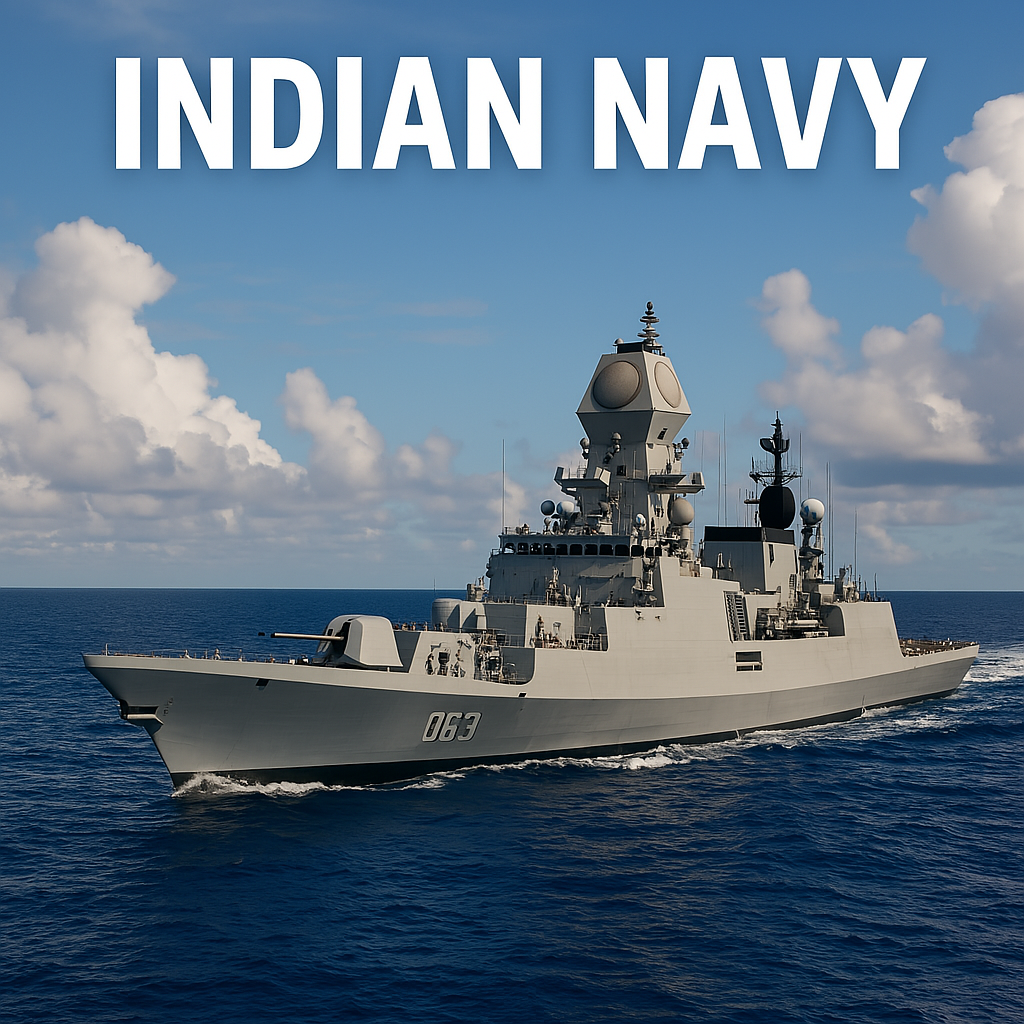Introduction:
The Indian Navy plays a crucial role in safeguarding the nation’s maritime borders, ensuring freedom of navigation, and maintaining global influence. With its modern fleet, highly skilled personnel, and strategic operational capabilities, the Indian Navy is one of the most powerful naval forces in the world.
A Brief History of the Indian Navy:
The roots of the Indian Navy trace back to the early 17th century, when the Maratha Empire established a strong naval presence under the leadership of Chhatrapati Shivaji Maharaj. However, the modern Indian Navy was formally established in 1950, following India’s independence. It has since grown into a formidable force with state-of-the-art ships, submarines, and aircraft.
Roles and Responsibilities of the Indian Navy:
- Defending Maritime Borders: The Indian Navy is responsible for securing India’s extensive coastline and protecting vital sea lanes of communication (SLOCs).
- Humanitarian Assistance and Disaster Relief (HADR): The Navy plays a key role in disaster management, providing assistance in the aftermath of natural calamities both within India and internationally.
- Combat Operations: The Indian Navy is trained and equipped for various naval warfare operations, including anti-submarine warfare, air defense, and surface combat.
- Maritime Security: The Indian Navy ensures the safety of sea trade routes, preventing piracy, smuggling, and other illegal activities in the Indian Ocean region.
Modernization and Technological Advancements:
The Indian Navy has made significant strides in modernizing its fleet to keep pace with the evolving security challenges. Some notable advancements include:
- Aircraft Carriers: India’s aircraft carriers, like INS Vikramaditya and the newly commissioned INS Vikrant, represent its growing naval power and ability to project air power across the Indian Ocean.
- Submarines: The Indian Navy has integrated nuclear-powered and conventional submarines into its fleet, enhancing its strategic deterrence capabilities.
- Warships and Destroyers: The Navy has commissioned several advanced warships, including stealth destroyers and guided-missile frigates, which boost its defense readiness.
The Indian Navy’s Global Presence:
India’s naval presence extends far beyond its territorial waters. The Indian Navy actively participates in international maritime security missions, naval exercises, and peacekeeping operations. It also conducts humanitarian missions, such as evacuating stranded citizens from conflict zones or providing medical aid in times of disaster.
Recruitment and Opportunities:
The Indian Navy offers a wide range of career opportunities for both officers and sailors. Through its recruitment process, the Navy attracts young talent and provides them with world-class training in areas like navigation, engineering, and aviation. Various schemes such as the NDA (National Defence Academy), CDS (Combined Defence Services), and direct recruitment enable youth to join the Navy.
Conclusion:
The Indian Navy is a symbol of India’s maritime strength and resilience. Its role in national defense, disaster management, and international cooperation underscores its importance in maintaining peace and security on the high seas. As India continues to assert its influence in the Indo-Pacific region, the Indian Navy will remain a cornerstone of its strategic vision.
Note: This is for educational purpose only.

